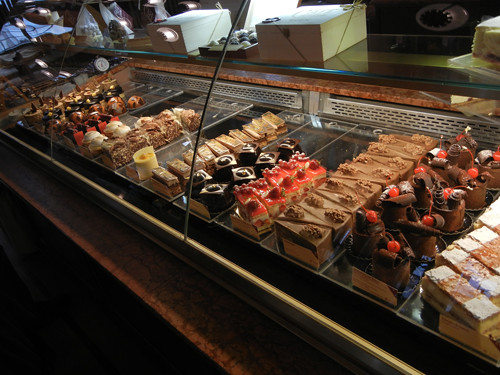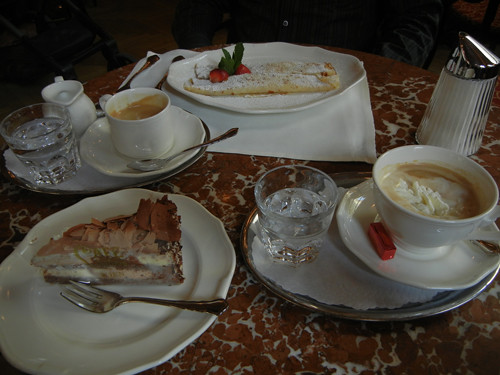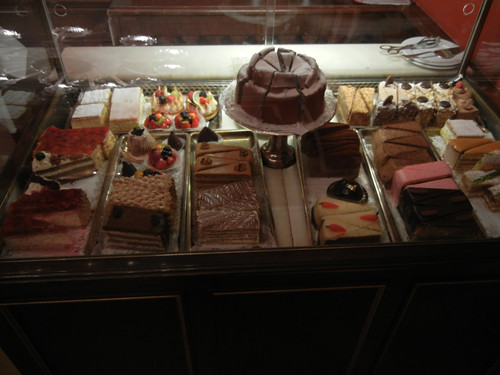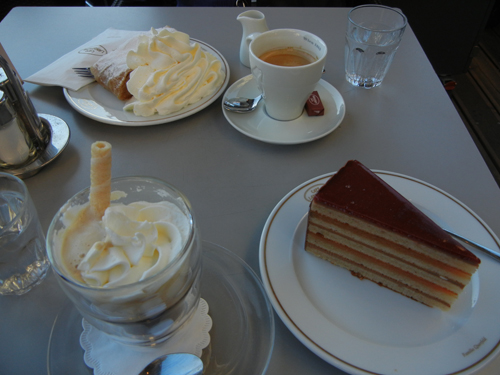 |
| Franz Schubert star near Musikverein, Wien |
When I visited Vienna last month, my second trip to Vienna, I attended three different theatrical performances, all in renown venues, within a brief span of six nights.
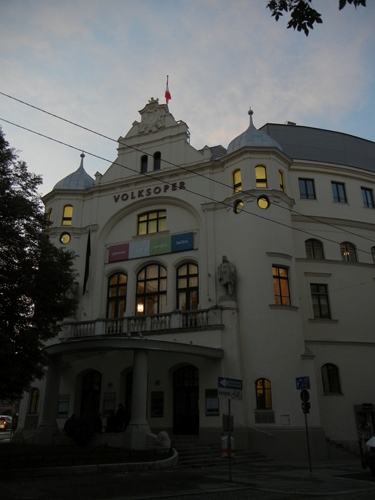 |
| Volksoper Wien |
The first piece was intimate and small, with only two dancers, and the last was ambitious, set to a full orchestra, several choruses and multiple couples and corps, while the middle one was, in the middle of everything. The first piece was lovely but just a tad underwhelming and the last one, hour long, had some muddy moments and sagging energy amongst generally very satisfying presentation and poignant choreographed dances; it was the middle piece made the strongest impact through its glorious choreography by Boris Nebyla, incredibly beautiful costume, and unflagging energy of the music. It was one of the most satisfying theatrical pieces I have ever enjoyed.
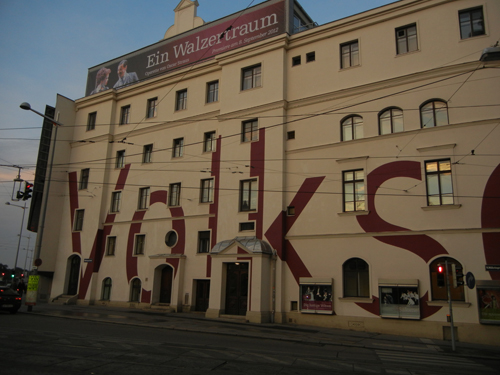
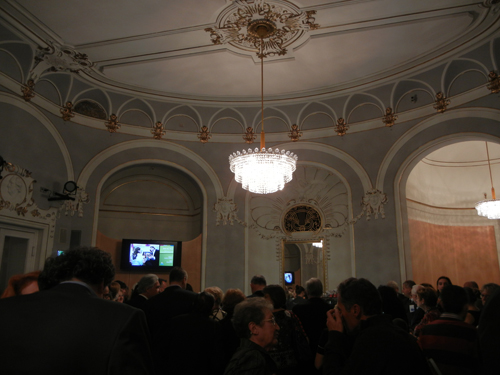
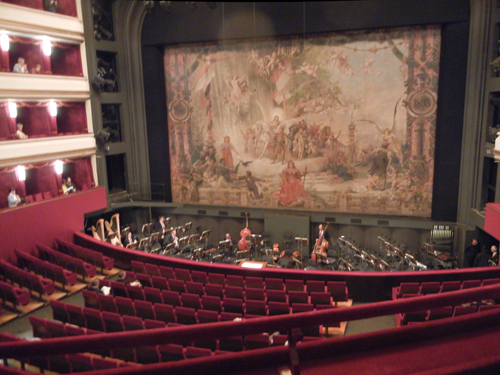
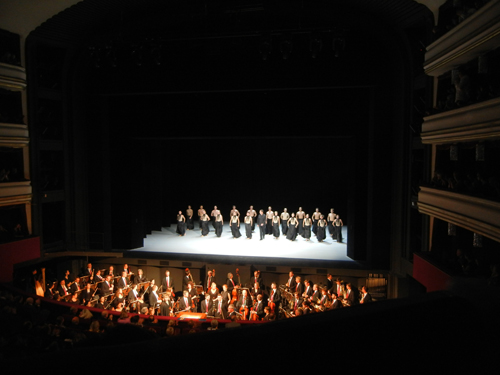
Volksoper is the "second" or "third" opera house in Vienna. The top one was the most exulted Wiener Staatsoper, and the other one might be "Theater an der Wien", where Beethoven's Fidelio premiered. There were only Puccinis in those houses in the week I was in Vienna so I had to pass them over. In 2002, I did enjoy a performance of Bellini's La Sonnambula at Wiener Staatsoper. Standing section. Cost 3 euros. At that time, a guided tour of that house was 5 euros. The house was much more grandiose and glamorous. Formal too. In the cafe inside the house, a server wore a name tag identifying her as Frau XXX. Volksoper, in contrast, was a little smaller, more intimate and more down to earth. After all, it was called "Folks' Opera". Yet, it was in that "people's house" that my partner was made to check his quite nice-looking and almost formal black windbreaker, where in Staatsoper, a similar but more casual windbreaker cost no concern, and was also in the presence of Present Havel in Prague. At Volksoper, My blazer was sanctioned by the usher.
For comparison, below are a group picture of Wiener Staatsoper I took during this trip:
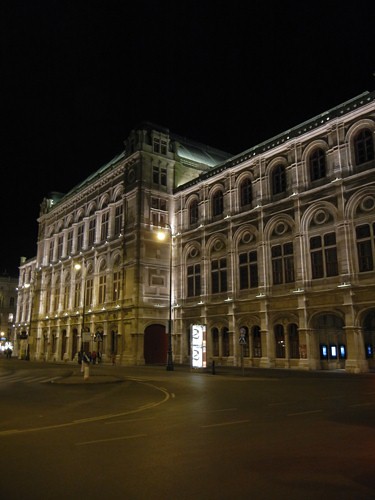
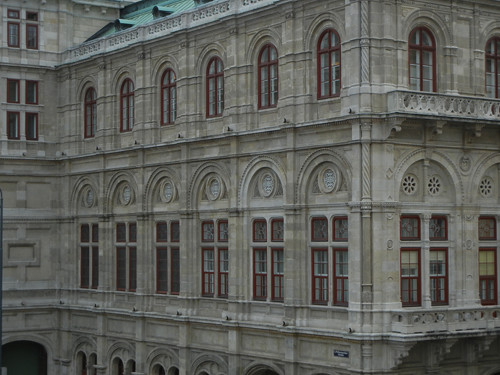

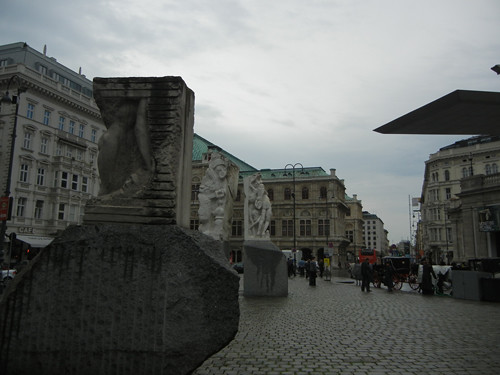
The second performance we attended was a play in one of the most prestigious theaters in German speaking world - Burgtheater in Vienna.

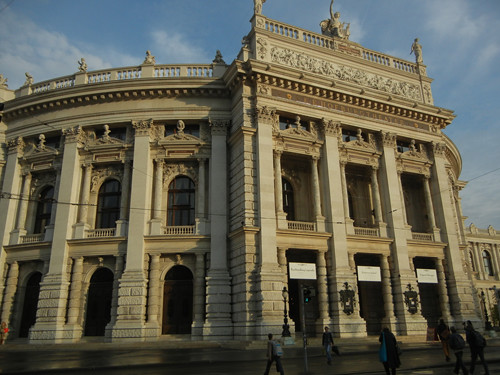
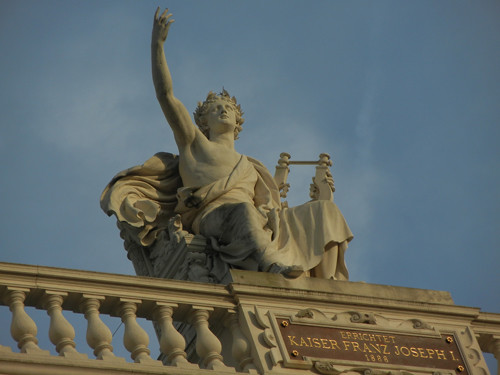
The play we chose to see was Prinz Priedrich von Homburg by Heinrich von Kleist. It was a seminal play on discipline, militarism and reason. It was a co-production with Salzburg Festival and in the title role, starred the wonderful young German actor August Diehl. There were many young people in audience, perhaps high school students - the tickets were as low as 2.5 euros. I didn't know if the high percentage of young people was the norm or not, or they were particularly lured by the heartthrob Diehl.
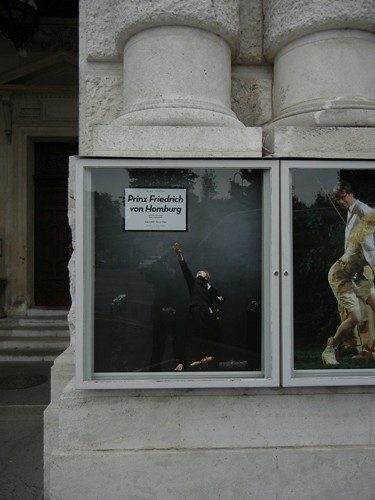

It was a sparse, modern and fiercely intelligent production, yet emotional raw and wrenching - two and half hours without intermission breezed through. I did my homework by reading both original German texts and English translation in advance, plus listening to a radio play produced in 1950s.
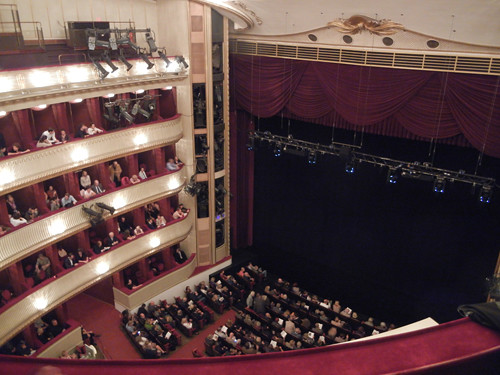
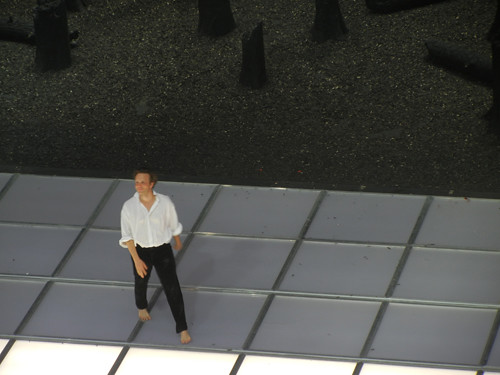
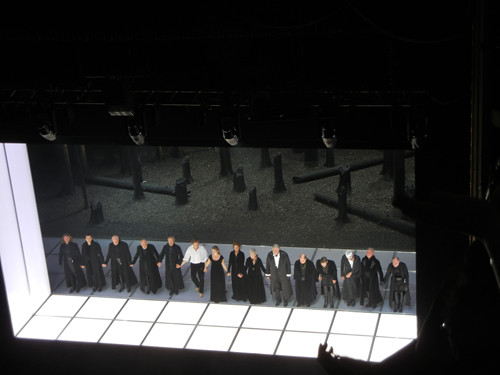
The most venerated musical venue in Vienna for symphonic performances was the Großer Saal (Great Hall), sometimes called Golden Hall, of Musikverein (Music Association). It was the venue for annual Vienna New Year's Concert, televised all over the world. The building was an ornate classical structure, with elaborate decorations inside the hall, centering around Apollo and nine muses gracing the golden-trimmed ceiling.
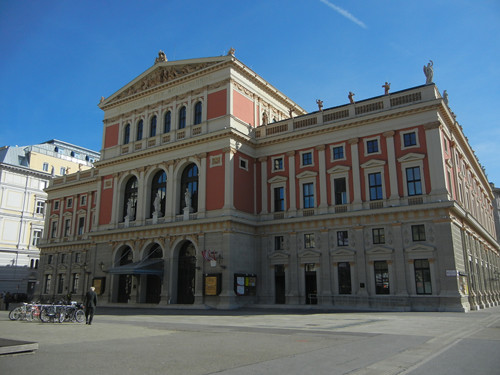

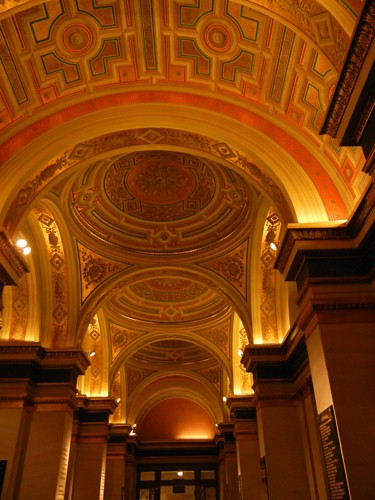
Wikipedia described the Großer Saal thus:
The Großer Musikvereinssaal, or Goldener Saal (Golden Hall), is about 49 m (161 ft) long, 19 m (62 ft) wide, and 18 m (59 ft) high. It has 1,744 seats and standing room for 300. The annual Vienna New Year's Concert is held here. Its lively acoustics are primarily based on Hansen's intuition as he could not rely on any studies on architectural acoustics. The room's rectangular shape and proportions, its boxes and sculptures allow early and numerous sound reflections. The original equipment comprised a historic pipe organ built by Friedrich Ladegast, the first organ recital was held by Anton Bruckner in 1872. The present–day organ was originally installed by the Austrian firm Rieger Orgelbau in 1907, highly esteemed by musicians such as Franz Schmidt or Marcel Dupré, and rebuilt in 2011.
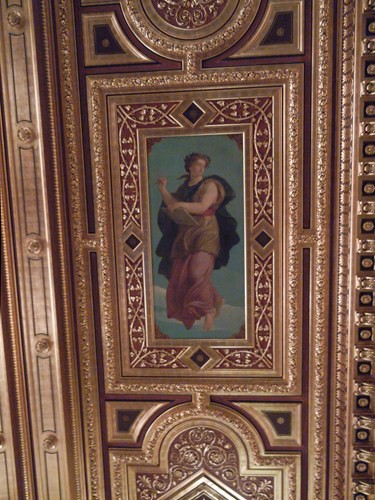
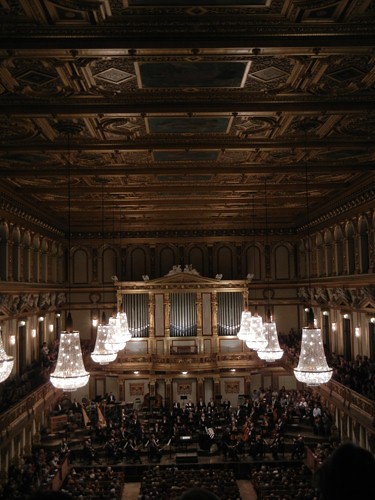

The program we enjoyed was performed by Wiener Symphoniker, conducted by Vladimir Fedosejev, Dirigent, with Edgar Krapp as organ soloist. The pieces they performed were:
- Werner Egk: Französische Suite nach Rameau für großes Orchester
- Alexandre Guilmant: Symphonie für Orgel und Orchester Nr. 1 d - Moll, op. 42
-------- Pause ---------- - Modest Petrowitsch Mussorgskij: "Bilder einer Ausstellung" für Orchester bearbeitet von Maurice Ravel
Encore: - Johann Sebastian Bach: Ouverture Nr. 3 D - Dur, BWV 1068 - 2. Satz (Air)

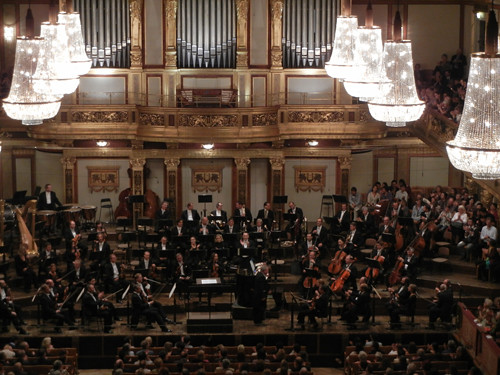
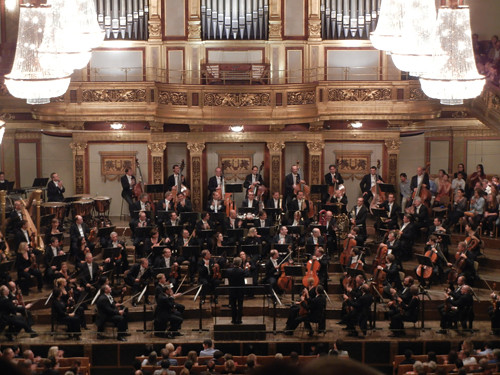
It was glorious performance in a glorious hall. I enjoyed the Egk and Mussorgky pieces very much. Guilmant's organ symphony was not very engaging but it did allow the organ to go full blast and it was very impressive indeed. For that experience's sake, I was glad for its inclusion.
The Wiener Symphoniker was a great symphonic orchestra, though overshadowed by the higher-profiled Wiener Philharmoniker. Unfortunately, Wiener Philharmoniker was not performing both time I was in Vienna. Therefore, a return to Vienna is a must.
We enjoyed the concert with our hosting friends, who were inspired and attempted to subscribe to the Wiener Philharmoniker's concerts but was told that they ought to wait for 13 years.
Indeed, Vienna does mean music.
Related posts on Art · 文化 · Kunst:
- Gondolas in Venice, Italy
- Teatro La Fenice di Venezia (La Fenice Theatre in Venice)
- Boy With Frog Sculpture and Punta della Dogana, Venice
- Bus Ride From Graz, Austria to Venice, Italy
- Magnificent Churches in Vienna
- Christopher Wheeldon's Brilliant Cinderella at San Francisco Ballet
- Theater Experiences in Wien (Vienna)
Label: Austria, Austria and Italy Trip 2012

